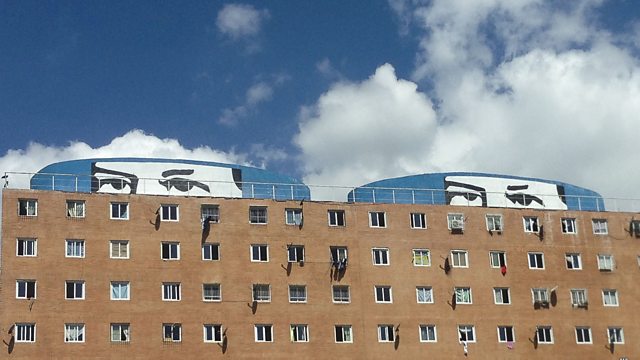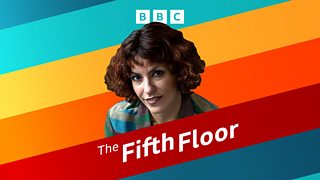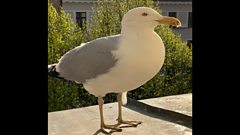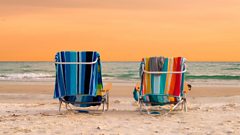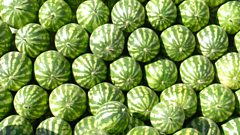Crisis, Carnival and Chavez in Caracas
How a Venezuela in crisis is marking a year since the death of former President Chavez
There was a surreal look to the barricades in the streets of Caracas this week, the assortments of burning garbage, tyres, old furniture bits of roofing and the other bits that make up the blockades were dressed up as beaches. They were decorated with palm trees and protestors also artistically scattered sand around them. This isn't a new form of protest, this is the demonstrators nod to Carnival. Venezuela is not Brazil when it comes to Carnival, but a fair amount of partying takes place anyway. People celebrate and go to the beach to enjoy their days off, forgetting their troubles. Maybe that was what the government had in mind when they extended the Carnival holidays. They were certainly keen to promote the festive spirit, my twitter feed was full of pictures of kids in full carnival regalia posted by government ministers who usually like to tweet about their latest policies.
But Carnival came to a close on Tuesday and was replaced by a show of a different kind. On Wednesday it was the first anniversary since Chavez's death. It's hard to believe it's been a year. Chavez is still everywhere. A silhouetted image of his eyes appears almost all over: on walls, T-shirts, on notebooks, even on earrings, as if he were still watching over the nation. And he is everywhere on television. In fact it is a recording of Chavez singing the national anthem that is often played to begin or end presidential events.
But all of that Chavez presence is focused in one part of the country. You see Venezuela is more divided than ever, and that is very apparent in Caracas. As you move across the capital city from east to west, you may as well be changing countries. Eastern Caracas, traditionally an opposition stronghold, is blocked off every afternoon by the barricades. Every night an unofficial curfew starts around 6pm, it used to be slightly later, just a month ago you could still go out and get a quick bite to eat before another curfew started. Venezuela has the fifth highest murder rate in the world, and nights are not safe. But now at 6pm the security forces come in with teargas to disperse young protesters who protect their barricades throwing stones and molotov cocktails.
When you head west, towards pro-government strongholds such as the 23 de enero district, the sound of the protests fades away. Many say they have no idea why the protesters are in the streets. Of course the problems behind the unrest, the record inflation rate, shortages of food staples and medicines, as well as crime affect everyone. But many are so loyal to Hugo Chavez's legacy they prefer to turn a blind eye to the issues, and even more so to the protests.
The divisions become even more apparent when you look at how the two sides portray each other. President Nicolas Maduro calls protesters fascists and talks of a coup plot financed by the United States. The protesters talk of a Tahrir Square of Venezuela and compare their fight to the Ukraine's. They say they live under a dictatorship and they are being repressed.
In the middle of all this, there are people like me - journalists - trying to make sense of the growing polarisation. I realise I have become suspicious of every little bit of information that comes my way - unless I have seen something with my own eyes. That obviously makes for a very limited amount of trustworthy information as unlike Chavez I don't have eyes everywhere at all times.
And all of this has happened just over the past few days: an ongoing crisis, violence, carnival and a commemoration of the death of a man who, whichever side you are on, changed this country's history for good. And who knows what next week will bring...
Duration:
This clip is from
More clips from The Fifth Floor
-
![]()
Seagulls and happiness in Riga
Duration: 07:54
-
![]()
Why a 'beach towel movement' is growing in Turkey
Duration: 06:15
-
![]()
Afghan women fight for education
Duration: 08:51
-
![]()
Watermelons and Ukrainian resistance
Duration: 03:15
